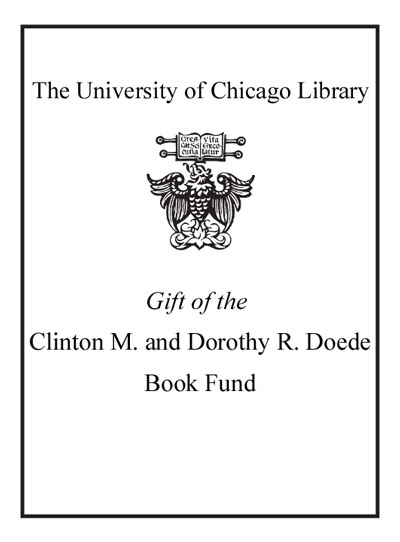Nonlinear dynamics of chaotic and stochastic systems : tutorial and modern developments /
Saved in:
| Imprint: | Berlin ; New York : Springer, c2002. |
|---|---|
| Description: | xiii, 374 p. : ill. ; 24 cm. |
| Language: | English |
| Series: | Springer series in synergetics, 0172-7389 Springer series in synergetics (Unnumbered) |
| Subject: | |
| Format: | E-Resource Print Book |
| URL for this record: | http://pi.lib.uchicago.edu/1001/cat/bib/5613684 |
Table of Contents:
- 1. Tutorial
- 1.1. Dynamical Systems
- 1.1.1. Introduction
- 1.1.2. The Dynamical System and Its Mathematical Model
- 1.1.3. Stability - Linear Approach
- 1.1.4. Bifurcations of Dynamical Systems, Catastrophes
- 1.1.5. Attractors of Dynamical Systems. Deterministic Chaos
- 1.1.6. Summary
- 1.2. Fluctuations in Dynamical Systems
- 1.2.1. Introduction
- 1.2.2. Basic Concepts of Stochastic Dynamics
- 1.2.3. Noise in Dynamical Systems
- 1.2.4. The Fokker-Planck Equation
- 1.2.5. Stochastic Oscillators
- 1.2.6. The Escape Problem
- 1.2.7. Summary
- 1.3. Synchronization of Periodic Systems
- 1.3.1. Introduction
- 1.3.2. Resonance in Periodically Driven Linear Dissipative Oscillators
- 1.3.3. Synchronization of the Van der Pol Oscillator. Classical Theory
- 1.3.4. Synchronization in the Presence of Noise. Effective Synchronization
- 1.3.5. Phase Description
- 1.3.6. Summary
- References
- 2. Dynamical Chaos
- 2.1. Routes to Chaos
- 2.1.1. Introduction
- 2.1.2. Period-Doubling Cascade Route. Feigenbaum Universality
- 2.1.3. Crisis and Intermittency
- 2.1.4. Route to Chaos via Two-Dimensional Torus Destruction
- 2.1.5. Route to Chaos via a Three-Dimensional Torus. Chaos on T 3 . Chaotic Nonstrange Attractors
- 2.1.6. Route to Chaos via Ergodic Torus Destruction. Strange Nonchaotic Attractors
- 2.1.7. Summary
- 2.2. Synchronization of Chaos
- 2.2.1. Introduction
- 2.2.2. Phase-Frequency Synchronization of Chaos. The Classical Approach
- 2.2.3. Complete and Partial Synchronization of Chaos
- 2.2.4. Phase Multistability in the Region of Chaos Synchronization
- 2.2.5. Bifurcation Mechanisms of Partial and Complete Chaos Synchronization Loss
- 2.2.6. Synchronization of an Ensemble of Chaotic Oscillators
- 2.2.7. Summary
- 2.3. Controlling Chaos
- 2.3.1. Introduction
- 2.3.2. Controlled Anti-Phase Synchronization of Chaos in Coupled Cubic Maps
- 2.3.3. Control and Synchronization of Chaos in a System of Mutually Coupled Oscillators
- 2.3.4. Controlled Chaos Synchronization by Means of Periodic Parametric Perturbations
- 2.3.5. Stabilization of Spatio-Homogeneous Motions by Parametric Perturbations
- 2.3.6. Controlling Chaos in Coupled Map Lattices
- 2.3.7. Summary
- 2.4. Reconstruction of Dynamical Systems
- 2.4.1. Introduction
- 2.4.2. Reconstruction of Attractors from Time Series
- 2.4.3. Global Reconstruction of DS
- 2.4.4. Reconstruction from Biological Data
- 2.4.5. Global Reconstruction in Application to Confidential Communication
- 2.4.6. Summary
- References
- 3. Stochastic Dynamics
- 3.1. Stochastic Resonance
- 3.1.1. Introduction
- 3.1.2. Stochastic Resonance: Physical Background
- 3.1.3. Characteristics of Stochastic Resonance
- 3.1.4. Response to a Weak Signal. Theoretical Approaches
- 3.1.5. Array-Enhanced Stochastic Resonance
- 3.1.6. Doubly Stochastic Resonance in Systems with Noise-Induced Phase Transition
- 3.1.7. Stochastic Resonance for Signals with a Complex Spectrum
- 3.1.8. Stochastic Resonance in Chaotic Systems with Coexisting Attractors
- 3.1.9. Analog Simulation
- 3.1.10. Summary
- 3.2. Synchronization of Stochastic Systems
- 3.2.1. Introduction
- 3.2.2. Synchronization and Stochastic Resonance
- 3.2.3. Forced Stochastic Synchronization of the Schmitt Trigger
- 3.2.4. Mutual Stochastic Synchronization of Coupled Bistable Systems
- 3.2.5. Forced and Mutual Synchronization of Switchings in Chaotic Systems
- 3.2.6. Stochastic Synchronization of Ensembles of Stochastic Resonators
- 3.2.7. Stochastic Synchronization as Noise-Enhanced Order
- 3.2.8. Summary
- 3.3. The Beneficial Role of Noise in Excitable Systems
- 3.3.1. Coherence Resonance Near Bifurcations of Periodic Solutions of a Dynamical System
- 3.3.2. Coherence Resonance in Excitable Dynamics
- 3.3.3. Noise-Enhanced Synchronization of Coupled Excitable Systems
- 3.3.4. Summary
- 3.4. Noise-Induced Transport
- 3.4.1. Introduction
- 3.4.2. Flashing and Rocking Ratchets
- 3.4.3. The Adiabatic Approach
- 3.4.4. The Overdamped Correlation Ratchet
- 3.4.5. Particle Separation by Ratchets Driven by Colored Noise
- 3.4.6. Two-Dimensional Ratchets
- 3.4.7. Discrete Ratchets
- 3.4.8. Sawtooth-like Media
- 3.4.9. Making Spatial Structures Using Ratchets
- 3.4.10. Summary
- References
- Index


